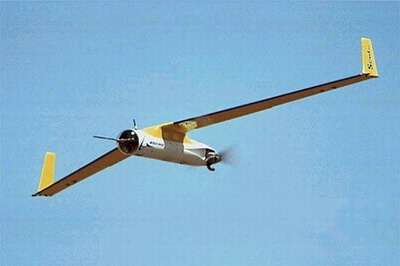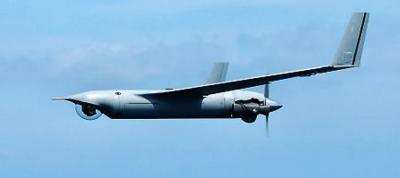ScanEagle Aircraft Flown In Marine Mammal And Ice Surveys
A research vessel plying the icy waters of the Chukchi Sea above the Arctic Circle seems an odd place for a Federal Aviation Administration employee. But that’s exactly where Alaskan Region inspector Jay Skaggs was on September 12. His presence aboard the Westward Wind helped ensure the first FAA-approved commercial flights by an unmanned aircraft went off safely and without a hitch.

The Westward Wind, chartered by energy giant ConocoPhillips, carried four Insitu ScanEagle UAS to perform marine mammal and ice surveys necessary to meet environmental and safety rules before drilling on the sea floor. Skaggs and the Insitu flight crew led by Jeff Kelly watched as the first commercial ScanEagle zoomed off a catapult and into the rainy Arctic skies. After a successful 36-minute flight, the ship’s retrieval system captured the UAS and the ground-breaking mission was complete.
The ScanEagle flight really represents the tip of the iceberg, so to speak. of the flight is a product of efforts by dozens of people from the FAA, ConocoPhillips, UAS manufacturer Insitu, and other federal and international agencies who put in months of intense work behind the scenes to open up the Arctic for commercial UAS operations.
The 2012 FAA reauthorization required the agency to establish permanent Arctic areas where small UAS can operate for research and commercial purposes. The challenging question was “how?” No UAS rules existed for the international airspace – some of which the FAA manages for the International Civil Aviation Organization—where all the UAS Arctic flights would occur.
In May 2012, a team of FAA experts began developing a workable approach to meeting the congressional mandate. What emerged was a plan to use three blocks of airspace over international waters. In these areas, small UAS would be able to operate 24 hours a day for research and commercial purposes. Missions from coastal launch sites would fly overwater to a maximum altitude of 2,000 feet. The plan also included developing protocols to operate unmanned aircraft beyond the vision of a pilot or observer (“beyond line-of-sight”) – a first for small UAS operations.
Once this strategic plan was approved in November, there were several boxes the FAA team had to check off before hardware got into the air during late summer 2013.

The first was a safety study mandated in the FAA reauthorization. Based on previous studies, the team determined there was an extremely low amount of air and ship traffic and people in the proposed flight areas. That would let unmanned aircraft operate safely beyond a pilot’s or observer’s vision while remaining within safety margins established for manned aircraft.
Concurrently, the FAA’s Aircraft Certification office was working to give the first civil type certificates to a pair of small UAS --Insitu’s ScanEagle X200 and AeroVironment’s PUMA. In late July, the agency awarded a Restricted Category Type Certificate to both models so these two small UAS could be flown commercially.
ConocoPhillips furnished the last piece of the puzzle. As early as October 2012, the company had expressed interest in flying a UAS for their marine mammal and ice surveys. The FAA and ConocoPhillips subsequently signed an Other Transaction Agreement and the agency issued an authorization for the flights to take place in the late summer when potentially harsh Arctic conditions would be most benign.
The September ScanEagle flights are just the start of the FAA Arctic Plan. Small UAS in the Arctic can benefit many operations, such as scientific research, search and rescue, fisheries, marine mammal observers, oil and gas leaseholders and maritime route planners. The project is giving the FAA and industry needed experience and a path forward to certify UAS for more commercial operations, both in the Arctic and elsewhere.
(ScanEagle pictured in file photos)
 ANN's Daily Aero-Linx (04.30.25)
ANN's Daily Aero-Linx (04.30.25) ANN FAQ: Turn On Post Notifications
ANN FAQ: Turn On Post Notifications Classic Aero-TV: Agile Aeros Jeff Greason--Disruptive Aerospace Innovations
Classic Aero-TV: Agile Aeros Jeff Greason--Disruptive Aerospace Innovations Aero-News: Quote of the Day (04.30.25)
Aero-News: Quote of the Day (04.30.25) ANN's Daily Aero-Term (04.30.25): Expedite
ANN's Daily Aero-Term (04.30.25): Expedite




